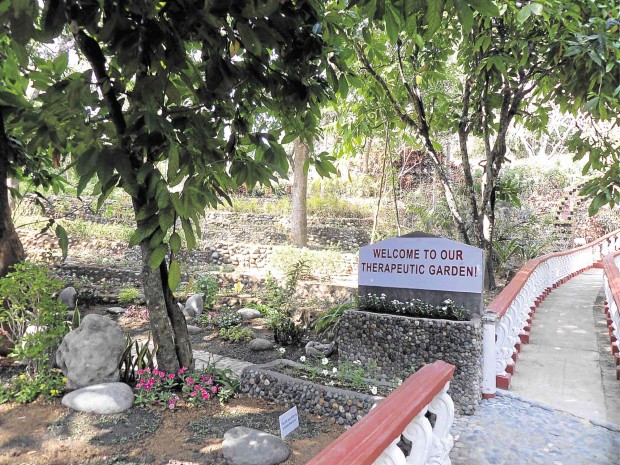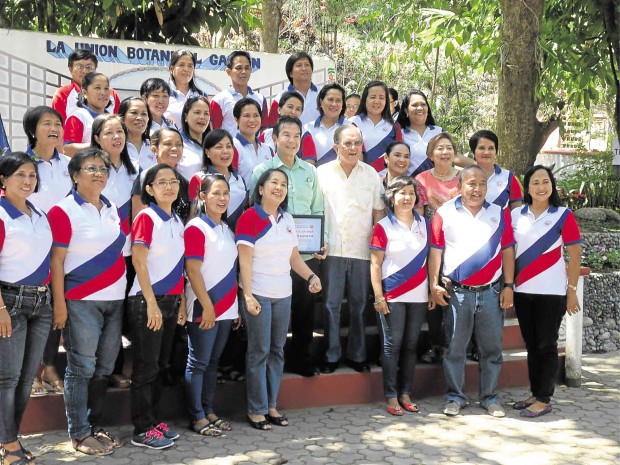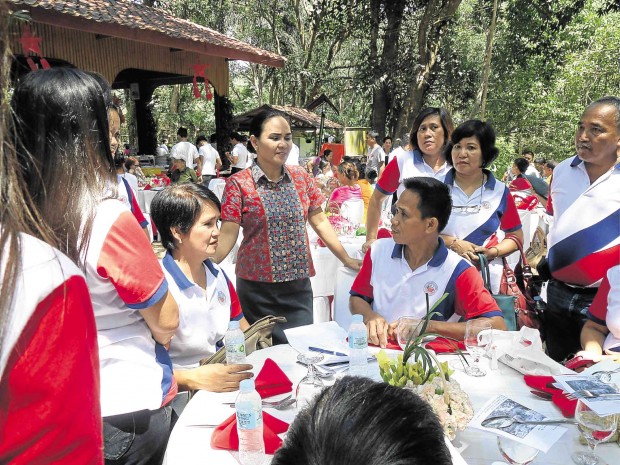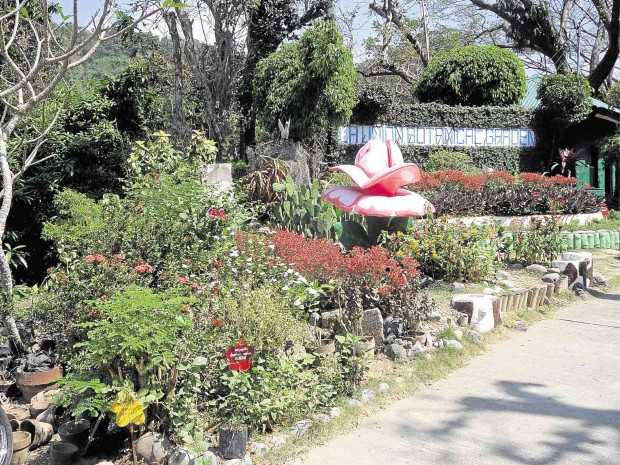La Union’s garden of wellness and learning
Photos by Linda B. Bolido
While schools in other major cities have made inane noontime and game shows or huge shopping malls favorite field trip destinations (the Quezon City government has banned such outings), La Union students spend several times a year communing with nature and getting to know their local plants.
Through the initiative of Mary Jane Ortega, chair of the Multi-Sectoral Governance Council, and the support of first district Rep. Victor Ortega, the province’s youngsters have the 10-hectare La Union Botanical Garden (LUBG) to explore.
And, with the opening recently of the Therapeutic Garden, the sprawling green oasis became even more relevant to La Union’s young and old.
Provincial schools superintendent Fatima Boado said most of the locals subscribed to both western and traditional medicines.
Article continues after this advertisementThe new garden would help them use traditional remedies correctly and more effectively, she said.
Article continues after this advertisement“The therapeutic garden could further strengthen the knowledge of kids about health and wellness, especially hilot, use of herbs or alternative medicines. It could validate existing practices and beliefs taught in school, at home and the community,” she said.
Boado said about a thousand schoolchildren, mostly in Grades 5 and 6, made field trips every year, usually in September and October, to LUBG as part of their exposure to nature and their environment.
“Since it (the garden) opened, about 19,000-20,000 kids have already visited the place,” Boado said.
Madeleine Corpuz, principal of La Union National High School, the province’s biggest secondary institution with a student population of more than 4,000, said students went to LUBG, even before the therapeutic garden opened, to find and collect the plants they studied in their Science classes.
Lessons in medicinal plants

A FLOWERING pink “chichirica” greets visitors at the entrance to the therapeutic garden. Tan says it has both antidiabetes and antihypertension properties.
During the simple ceremonies that formally opened the new therapeutic garden and marked the 21st anniversary of LUBG, Corpuz and her colleagues got a brief introduction to the therapeutic properties of the plants they were likely to find in the new garden.
La Union’s school principals made up the bulk of the audience.
Guest of honor Dr. Jaime Galvez-Tan, former health secretary and longtime advocate of traditional medicine, mentioned how the lowly “chichirica” (periwinkle) had antidiabetes and antihypertension properties. The colorful santan’s buds were a cure for dysentery when boiled, while the common balbas pusa was also for antihypertension.
Mary Jane Ortega, former San Fernando city mayor, said she initially wanted the botanical garden to be “the lung of the city so that we can have clean air by having a balance between the number of trees and the people living in the city.”
But it was also designed as a destination for study tours so students would not have to travel far to learn about the
importance of the environment and the scientific and common names of plants and their uses, she said.

LA UNION school principals with Dr. Jaime Galvez-Tan, Rep. Victor Ortega, Fatima Boado and Mary Jane Ortega
Ortega said the LUBG had also become the subject of academic research, the centerpiece of several doctoral theses, such as the study of 120 medicinal plants, mushrooms and butterflies.
The researchers, Ortega said, were all guided by former project director and now consultant Dr. Romualdo del Rosario.
Ortega said the LUBG also supported the city’s wellness campaign, offering a place for recreation where people could walk as they appreciated nature. Even students visited LUBG on their own and families had picnics there, she said.
Ortega said LUBG started as a reforestation site for members of Japan Overseas Volunteers, who planted fruit-bearing trees like mango.
Teaching kindness
Originally, she said she wanted a mini zoo to teach people to care and love animals because “I believe people who are kind to animals will also be kind to all living creatures, including their fellow humans.”
The project was revised after she met Del Rosario, who said the country “has no botanical garden in the real sense of the word.”
Ortega said they charge an entrance fee of P20 per person, P10 for students, to cover the cost of feeding the animals, like birds, inside the LUBG.
Boado said that while the LUBG, especially with the newly opened therapeutic garden, would remain among the top field visit destinations for students, she would not completely rule out an occasional visit to a mall.
She said there were some things about the new, high-technology environment that students could learn by visiting a mall, although La Union so far has only the homegrown CSI City Mall.
Boado recalled how it took some time before students actually ventured to get on an escalator because they were unfamiliar with the moving staircase.
Other speakers at the opening of the new therapeutic garden were Representative Ortega and Del Rosario. The addresses of San Fernando Mayor Pablo C. Ortega and La Union Gov. Manuel C. Ortega were read by their respective representatives.



